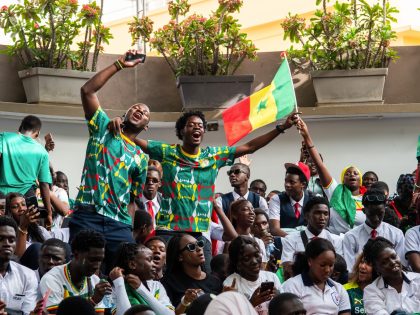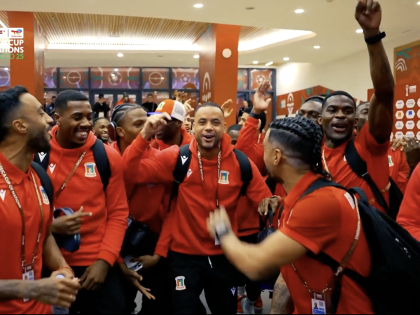There are no laws against photography
The latest in a series of interviews by Roxsanne Dyssel. This time, with Egyptian photographer and blogger, Mohamed Elshahed.

Our weekly feature profiling African photo-blogs and/or tumblrs moves to Cairo this week, as we take a scroll through Picture Masr, a Tumblr created by Cairo resident and Phd student Mohamed Elshahed. The images of “Egypt (mostly Cairo) beyond your Google image search results. For other entries in the series, see here and here.
What motivated you to start your blogspot page?
I had started a blog about Cairo’s architecture, urbanism and cultural heritage at Cairobserver.com in April 2011. Motivated by creating material for Cairobserver.com I went out more to explore the city and started to compile a collection of photos of urban scenes, surfaces, and objects. Egypt has a rich and long history of photography that goes back to the very beginning of the invention of the daguerreotype. But in more recent years photography on the streets of Egypt outside touristic areas was nearly forbidden before the revolts of 2011. During the last years of the Mubarak era if I stood and took a picture in a downtown street, within minutes a uniformed police officer or an plain clothed secret police would have come out of nowhere and asked me what I was doing and why I was taking a picture. It was a policy that no one seems to understand. I think it was to deny people from documenting their surroundings, the denial of creating a record of daily life, mundane objects, typical architecture, practices of daily life — these were all things off the record. Of course this wasn’t official policy and there was no law against photography in streets but the former regime — and the current one it seems — didn’t need law to do what it wants to do. Walking around the city, there were so many moments, surfaces, buildings, places that I found to be pleasing to look at and even aesthetically pleasing and so I wanted to document them. Once the revolution started all this changed and suddenly everyone was taking pictures of everything all the time. In fact it was people taking pictures of protests and police brutality with their phones and simple cameras and sharing them which contributed to the spread of the movement and popular discontent. For me it was liberating to walk around the city and take pictures of spaces of everyday life, things that don’t end up in tourist brochures, or journalistic coverage of events, or artist galleries, just normal even boring things.
What does the word “Masr” mean? How do you decide on a photo for Picture Masr?
“Masr” means Egypt but in Egypt it is also the word for “Cairo” to those not from there. So it is both the country and the capital city which is why I say that the pictures on the blog are Egypt but mostly Cairo. I don’t have much of an editorial process in what I post, I simply upload random images from my collection, I try to do it daily to keep the blog fresh. I should make clear that I use a simply point and shoot, I am not a photographer and I don’t edit the photos, they really are pedestrian shots as seen by a resident of the city.
 Are there any pages that you visit regularly for great content and inspiration?
Are there any pages that you visit regularly for great content and inspiration?
There is a great tumblr I like to check out often called Archi/Maps which has a great collection of images, plans, maps of architecture and cities from around the world. I am also inspired by current events and following the plethora of videos, particularly citizen journalism, which have appeared over the past two years. The best, and most inspiring, source for this kind of media is the Mosireen Collective (you can find their work here). Also Facebook has been used in Egypt as a platform to create online galleries of historic photographs, I think in the absence of an institution that handles and publishes historical photographs while at the same time Egypt has had a rich and productive photographic past, so there are a lot of photographs out there, mostly in personal collections, documenting cities and social life. These pages have become very popular and they often show inspiring and surprising evidence of Egypt’s modernity. I am not a nostalgist, but I still enjoy these photos and pages as documents that inspire for future creations and productions rather than melancholic left overs from by-gone better times.
Who is your favorite photographer or photo blog on the continent and diaspora right now?
For contemporary photography I follow Kim Badawi, an Egyptian photographer with a portfolio covering subjects from around the world. One of his latest series was documenting Chinese immigrants in Egypt, a beautiful and fascinating series of black and white photos. You can check his website here.
Another photographer I follow, who is also my neighbor, is Randa Shath. Randa is the photo editor at the newspaper Al Shorouk. She has traveled around Egypt and has taken incredible warm and sincere portraits of Egyptians in cities, towns and villages in their own context. Randa also produced several books. To my knowledge she doesn’t have a photo blog but you can read an interview with her here.
Personally, I don’t take many portraits and I almost exclusively photograph in the street but almost all my favorite historic photographers mostly photographed people in studios, such as Seydou Keita from Mali, Van Leo from Egypt and Hashem El Madani from Lebanon. Their photographs are endlessly inspiring.
 What to you makes your page unique among others that feature African photography?
What to you makes your page unique among others that feature African photography?
I can not claim that it is unique. My personal interest is to capture things in the city that grab my attention as I am walking around. I’m not trying to be artsy nor do I look for anything in particular to photograph. I think photography from the region, especially that which makes it to the international press, fits within very clear categories: photojournalism typically depicting tragedies and despair, documentary often seeking exceptional or “untold stories,” the romanticized landscape/idealized touristic object type of photography which is also promoted by our governments to make themselves look good and to promote a particular but often reductive image of our countries — and then there is the orientalist category which never goes away. I think my page shows things that fall between the cracks, they aren’t photographed by locals either because they are so mundane and part of daily life.
Do you feel Picture Masr embodies contemporary Egypt, or the authentic part of Egypt tourists are not shown?
Authenticity is a word/concept I’d rather not discuss. I think so much of the debate in countries such as Egypt for the past several decades has been centered around ideas of authenticity which has wasted time and energy and we’re running around in circles and getting nowhere. So I am not trying to argue that the images I take are “more authentic” than touristic or journalistic images. Picture Masr is how I see my surroundings. That’s all.
I am curious to know how you get your pictures since some of them were dated as recent as yesterday and all attributed to you.
I live in Cairo. I take the pictures on walks around the city or other cities in Egypt during weekend trips. I then upload them one at a time in no particular order and without any editorial constraints. Some of the pictures are from five years ago while others are uploaded the same day they are taken. I am not trying to tell a story or present a narrative, instead I hope to convey a particular feeling of Egypt which isn’t about chronology or time. It is very much about place, its features, qualities and sensibility.
 How do you feel regarding the social revolts directed towards the government in Egypt?
How do you feel regarding the social revolts directed towards the government in Egypt?
The revolution was long overdue. It has real, legitimate reasons which have to do with economy, policies, and politics. Regimes in Africa and the Middle East with very warm and friendly relations with western governments have been easing exploitation of resources, suppressing political activity, and controlling social mobility. Egypt was no different.
Picture Masr describes itself as Egypt beyond google search. Do you think this beauty of everyday life depicts gradual decay through architecture? I shouldn’t presume to speak for you so please correct me if am wrong.
Not sure I understand what you mean or how the first part relates to the second part of the question. I’ll try to answer them separately:
There is a risk of reproducing reductive imagery of places even today when all one has to do is enter a word into a search engine. A place like Egypt today with all its complexity is reduced to a few images that top the search results: pyramids, mosques, protests. Because our governments have failed to support various creative industries in Egypt, and have suppressed them, while dominating the state’s massive culture ministry and directing tourism to a few easy to manage sites that can generate some businessmen tied to the government with some income without the prerequisite of government investment into great infrastructure or simply improving quality of life to the average person, the image that was exported of Egypt was tightly controlled (average citizens were not ambassadors to their country) and it was highly reductive. That’s why I saw Picture Masr as a counterpoint, it is everything that doesn’t make it on a postcard, advertisement, or comes up in a basic google search.
Architecture needs maintenance, and when buildings are not maintained they decay and sometimes there is beauty to that process. I have to be careful not to romanticize decay although I also refuse to see decay in architecture as only negative. But in any case, this isn’t a theme I am after.
Finally, tell us about your experiences with subjects. Is there a particular reason that Picture Masr photographs structures and not people? Do you make an effort to retain this theme or are you looking to explore a different angle?
There is no theme that I go after. I do take pictures of people but I am generally not comfortable taking pictures of strangers, it makes me feel invasive and even objectifying them. I am an architect by training but that isn’t why I pay close attention to buildings. In fact I went to study architecture because growing up in Egypt the buildings always captured my imagination and my attention. I found architecture as a profession to be ethically problematic and boring in practice, at least today, but my love for architecture and the built environment as a viewer and a critic is stronger than ever. What I find most interesting in Egypt is how there are so many layers to everything, there is no obsession with pure form, or “original” condition, when it comes to buildings, which means that there are constantly pieces and layers added to the built environment by different user so that they create a constantly changing environment in all of its details. I find this to be exciting and interesting.
- You’ll find more of Mohamed Elshahed’s work on his Picture Masr Tumblr. Here.




















